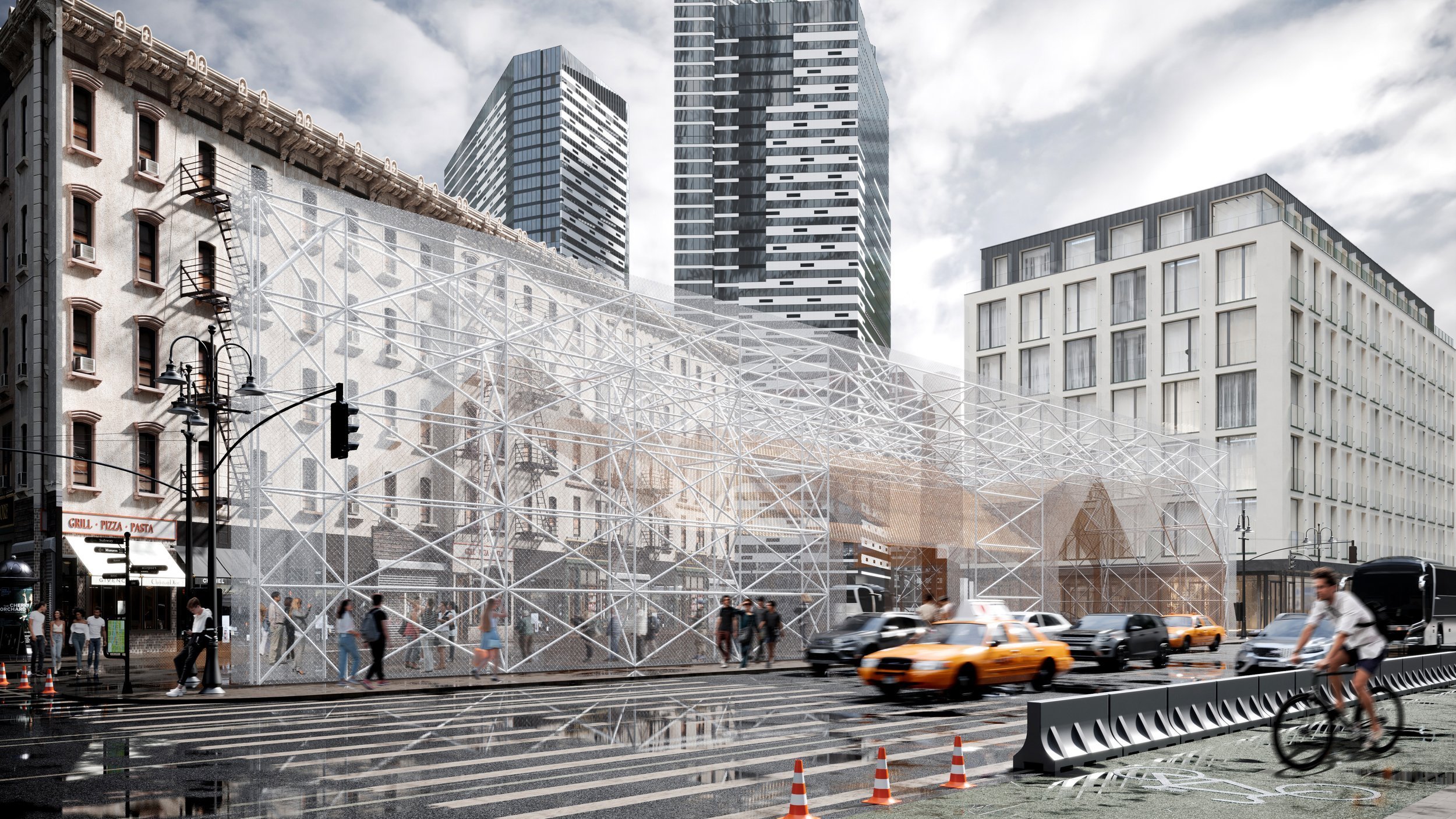Kenneth Namkung of Monument Office | Suburbanism Exhibit in New York City | The Origins of Mass Produced Housing
Courtesy of Monument Office
The Origins of Mass Produced Housing
Due to the 1950 Federal Housing Authority and Veterans Administration loan programs, suburbs on Long Island and New Jersey were growing at 10 times the rate of downtown areas in New York City. Levittown in Nassau County is perhaps the most quintessential example of the outcome of those loan programs.
Totaling 17,400 homes built on 4,000 acres of potato fields, Levittown was marketed as a safe, peaceful escape from the city. But, like most things that seem too good to be true, there was something nefarious behind-the-scenes: the loan programs had race-based underwriting guidelines and deed covenants that shut out BIPOC communities. Almost 75 years later, the boom of these cul-de-sac neighborhoods are at the root of many of the pressing urban planning issues we face today, including excessive traffic, housing affordability, racial discrimination, and the persistence of poverty.
In this conversation with Kenneth Namkung, Founder of Monument Office and Senior Associate at Perkins Eastman, we explore the history of single family developments in the New York City area. We also dive into the details of his Suburbanism installation, designed for 32nd Street leading into Herald Square in Manhattan.
The installation focuses on taking up negative space in an urban area and evoking the history and memory of the American suburb for those who previously lived there. Kenneth also discusses his inspiration for the design and reflects on the project as a Korean immigrant who grew up in a suburban area. We also touch on the impact of the American interstate system, redlining, and changes to tax codes in the 1980s, all of which all contributed to the creation of the American suburb we know today.
“When I was growing up there was still a very, very strong connection to the local culture in the suburb. Now, they’re much more generic and there’s much more emphasis on curb appeal. In some ways, the new American suburb is much more about looking like something as opposed to actually being something.”
Courtesy of Monument Office
About Kenneth Namkung
Kenneth is the founder and designer at Monument Office, a research and design firm based in Brooklyn, New York. His work focuses on the interplay between architecture, public space, and memory. Currently, he is a Senior Associate at Perkins Eastman. Previously, he was a Senior Project Designer for NBBJ design and worked at Studio Link-Arc, Ennead Architects, and Santiago Calatrava. He began his career at Rafael Viñoly Architects. He is a graduate of the School of Architecture at MIT and the University of Virginia.
Episode Timestamps
2:26 – The history of single family developments in the New York City area.
8:22 – You designed the Suburbanism installation for Harold Square. Tell us about this part of Manhattan and why you chose it for the installation.
16:00 – Walk our listeners through what they would see and feel as they were walking along 32nd Street into Herald Square and what they would see in and around them at the Suburbanism installation.
19:19 – In your opinion, what is the suburb and how has it changed over time?
25:27 – Help our listeners understand the things that resulted in the American suburb being created.
29:49 – How do you think places like Huntington, New York and Greenwich, Connecticut are going to benefit from COVID in the long term in the context of the suburban type?
Additional Resources
Courtesy of Monument Office
About your host:
Atif Qadir is the Founder & CEO of Commonplace, a technology company making it easy for commercial real estate professionals to find and use the $100B of real estate incentives given out every year in the US.
His work has been covered by Technology Review, The Real Deal, Commercial Observer, and Propmodo. He’s also a frequent speaker on the future of buildings and cities on popular industry podcasts and at conferences, including this past year at the Commercial Observer National DEI Conference, Yale AREA Conference, Columbia Real Estate Symposium, Open Data Week NYC and Austin Design Week.
About Commonplace
Commonplace is a founding sponsor of American Building. It is a 100% minority-owned, real estate technology company founded in 2020 to make financing social impact development projects across the US easier. It is funded by venture capital investors Hometeam Ventures, Park West Asset Management, New York Ventures and Shadow Ventures.
About Michael Graves
The world-famous design firm Michael Graves is also a founding sponsor of American Building. Its namesake, the iconoclastic designer Michael Graves, FAIA was a fierce advocate for people-centric design. His work defines a generation of American architecture and includes the Portland Building, the Humana Building and the Denver Public Library. The 1st season of American Building was filmed live at The Warehouse, his historic home in Princeton, New Jersey:
Rate, Review, & Subscribe on Apple Podcasts
Did you love this episode? Let us know by rating and review our show on Apple Podcasts. It’s easy - simply click this link, click on Listen on Apple Podcasts, scroll to the bottom of the page, and select “Write a Review”. Let us know what you liked best about the episode, and what others can expect when they listen to our show.
While you’re at it, consider subscribing to American Building. When you subscribe, you can guarantee you never miss a conversation with one our renowned designers, architects, and developers. Subscribe now!


